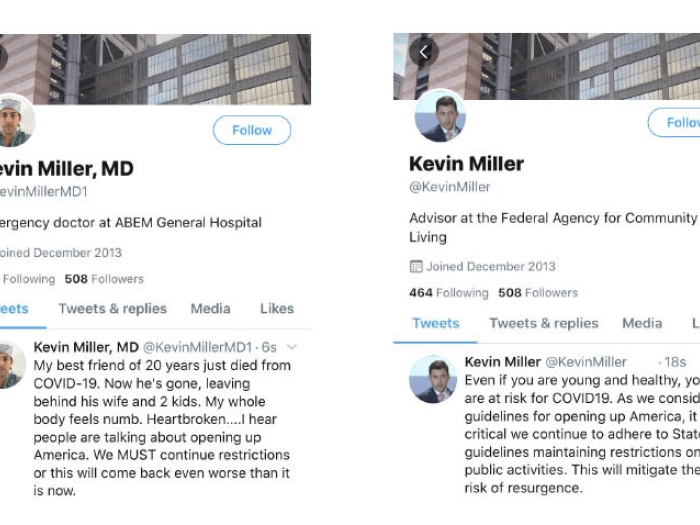Two tools may help with public health emergency response: real-time surveys of providers on the front lines, and a new framework for capturing successes and learning from failures.
7:00 AM
Author |

Ebola happened.
Zika and the opioid overdose crisis are happening now. And the next national or global public health emergency is surely just around the corner.
SEE ALSO: Surgery Surprise: Small, Rural Hospitals May Be Safer for Common Operations
Each time, those on the front lines need real-time information, training, equipment and medications to save lives. Government agencies and global health organizations need to know what's happening, fast, so they can adjust their plans and advice.
But too often, the best lessons aren't compiled and shared until after the situation ends, when it's too late to apply them.
That needs to change, says Mahshid Abir, M.D., a University of Michigan Medical School emergency medicine physician who also works for the RAND research organization.
Abir and her colleagues recently published a paper showing one key change that could help: Medical professional societies can use their existing email lists, and the doctors who belong to their organizations, to survey front-line providers while a public health emergency is going on, the authors say.
We can't rely on old information and old data or outdated practices when dealing with public health emergencies that we don't have experience with.Mahshid Abir, M.D.
Evaluating Ebola response in emergency physicians
Writing in the journal Disaster Medicine and Public Health Preparedness, the researchers report one success from the height of the Ebola outbreak in fall of 2014.
The American College of Emergency Physicians sent three surveys, which asked members via existing email lists how their hospitals were preparing for possible Ebola-infected patients. The surveys included multiple-choice or yes/no questions, and more open-ended queries. Results showed the power of this approach.
In one survey, which had 1,100 respondents, for example, 83 percent of doctors in large emergency departments said they had the right protective gear to keep them safe while they cared for a suspected Ebola patient. But only 60 percent of the doctors who worked at the smallest emergency rooms felt they had the right gear.
Via the open-ended questions, many physicians expressed frustration with the rapid change in guidance coming from multiple sources during the fall of 2014.
This rapid pulse-taking gave the Centers for Disease Control and Prevention, and its parent, the Department of Health and Human Services, a real-time look at what some of the nation's emergency doctors were saying.
Although Abir says more could have been done to increase the response rate, and to analyze and share the results further in real time, the surveys act as a proof of concept that ACEP and other professional societies can heed for future — or current — emergencies.
"The classic way to evaluate disaster and crisis response is to study it after the fact. But all of us, especially providers and hospitals that have less experience responding to public health emergencies, can benefit from understanding what's going on as the emergency is unfolding," she says. This is particularly true for public health emergencies with a protracted response, she adds.
"We need to harness the power of the professional network to collect, analyze and disseminate information in real time, and get the voice of the front lines to those who are making policies and clinical guidelines," Abir continues. "The machinery is there to do these surveys, but we need to use it in real time, and get commitment ahead of time from a key cohort that they will respond in a very short time frame when they receive a survey."
A guide for response
Abir and her colleagues at RAND also published a new framework that governments and major response organizations can use in real time to track successes, failures and lessons learned during an emergency.
SEE ALSO: Medicaid Expansion Brings Hospitals Across-the-Board Relief
They call it the Intra-Action Report framework, compared with the "after-action reports" commonly compiled by disaster preparedness teams after an incident or outbreak, and it's available for free use on the RAND website.
The IAR breaks down response activities into seven domains, and 31 areas of activity, based on previous studies of public health emergencies. It covers areas from disease surveillance and controlling the points of entry to health care facilities, to managing volunteers and handling dead bodies.
The IAR framework could be used as a "living document" during an emergency, allowing agencies and organizations to track and share activities, problems and successful responses. It also considers that it won't always be emergency physicians who are the front-line health providers in every situation.
In the current Zika virus outbreak, for instance, the key health providers are those who care for pregnant women, and women who want to or could become pregnant, because of the virus's potential to cause serious birth defects.
Similarly, the opioid epidemic, which is leading to thousands of overdoses a year, has a double relevance for emergency departments nationwide. They're both the source of painkiller prescriptions for many people, and the treatment site for those who have overdosed on prescription opioid or illicit opioid drugs such as heroin. More real-time information could help emergency providers handle both aspects of the crisis.
"We can't rely on old information and old data or outdated practices when dealing with public health emergencies that we don't have experience with," says Abir. "We need to get information quickly and get it to policymakers to change practice."

Explore a variety of healthcare news & stories by visiting the Health Lab home page for more articles.

Department of Communication at Michigan Medicine
Want top health & research news weekly? Sign up for Health Lab’s newsletters today!





